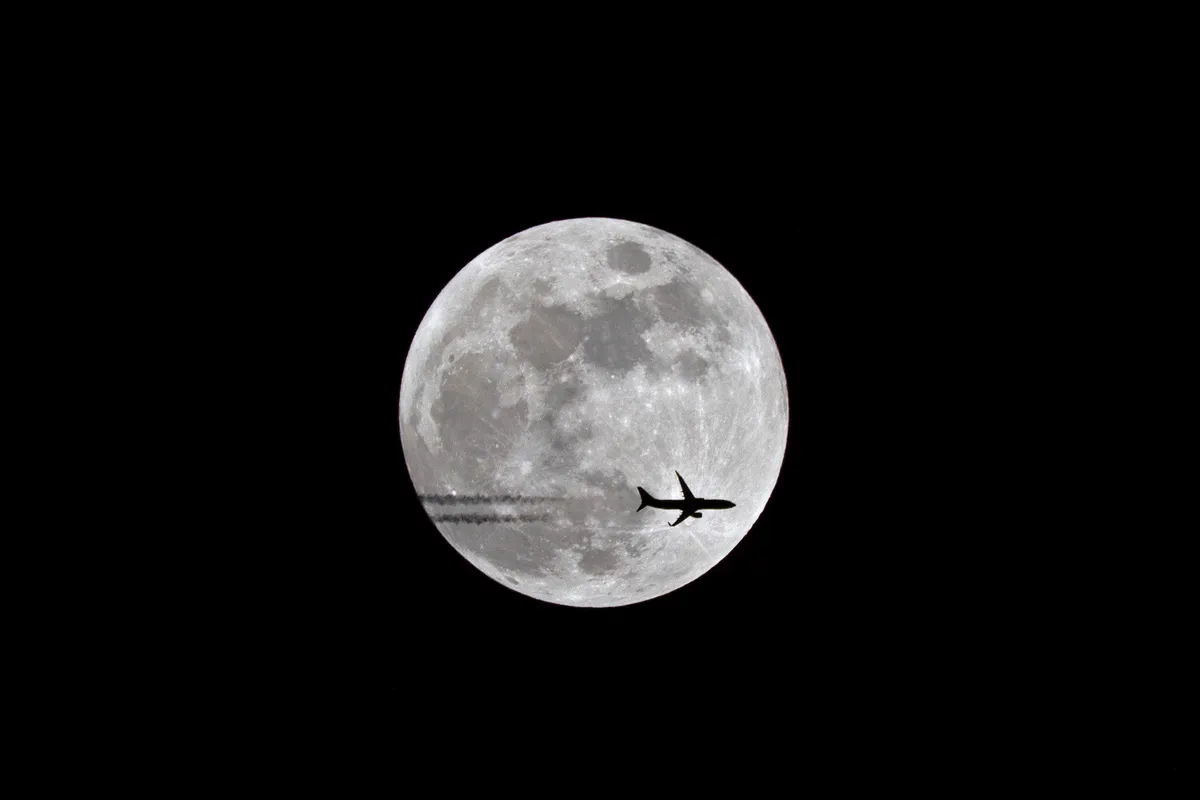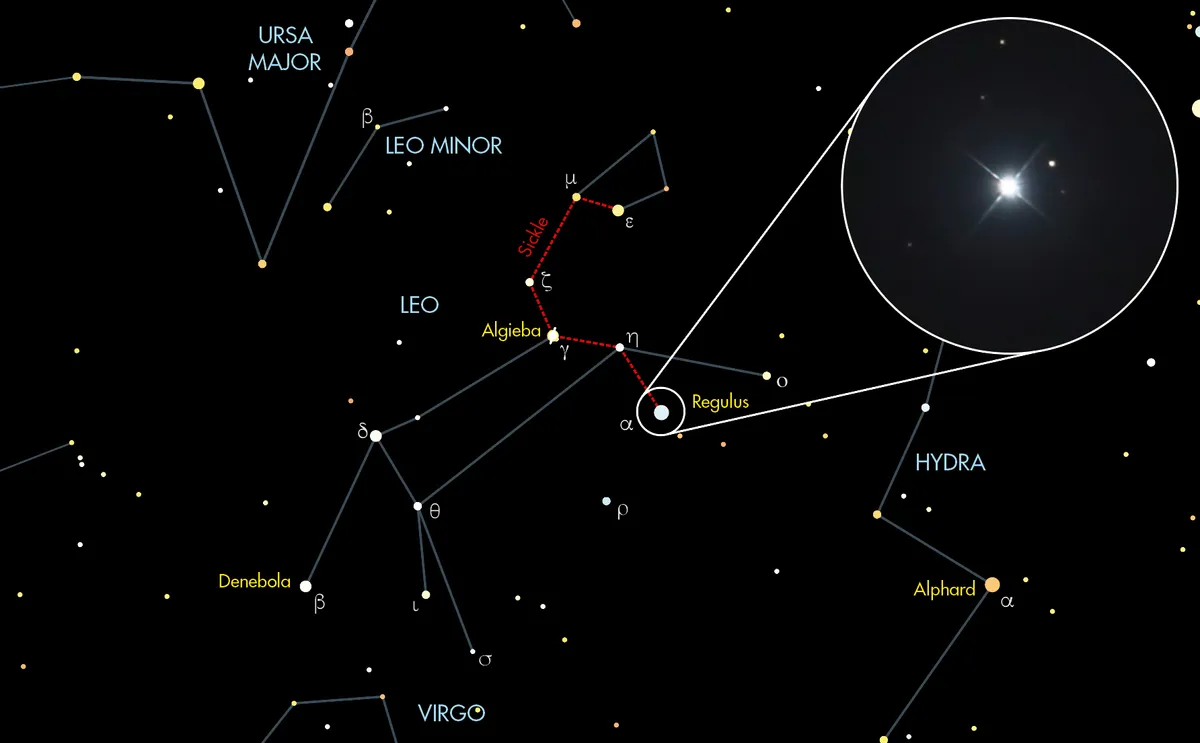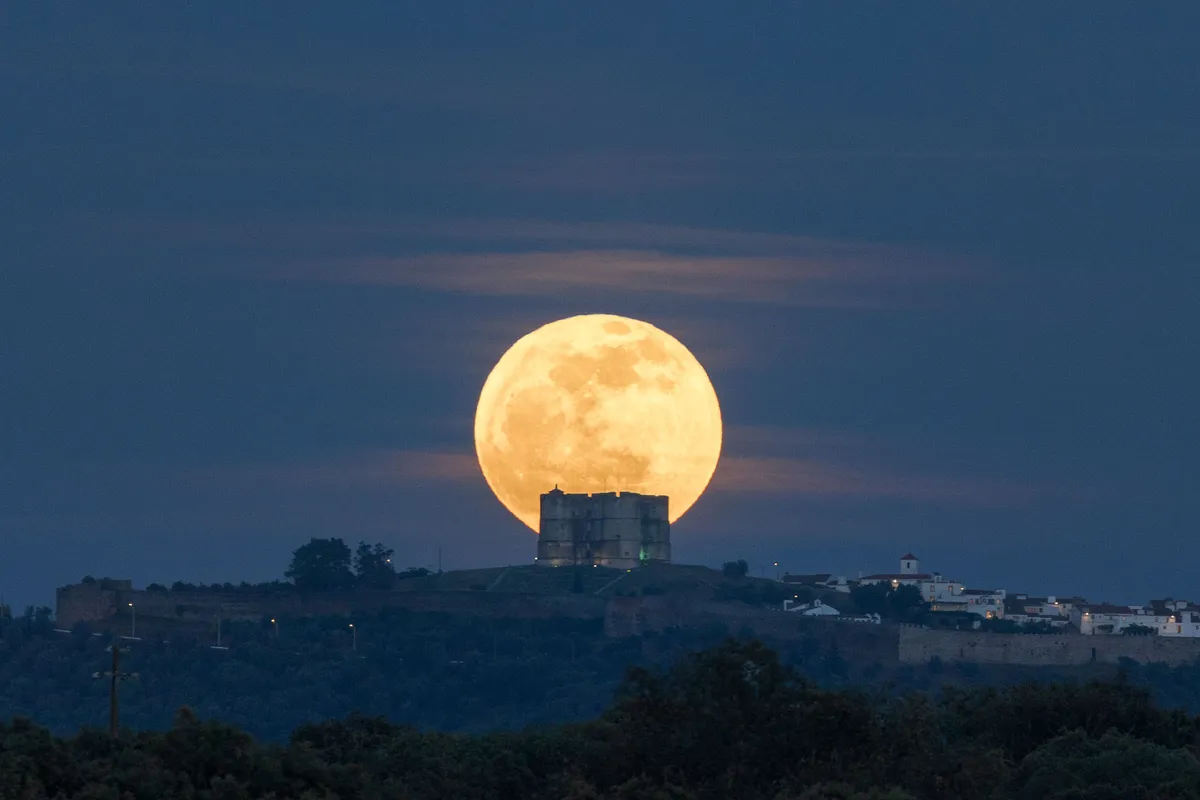The February full Moon is the Snow Moon, the second full Moon of 2025, rising this week on 12th February at 17:07 UTC.
The full Moon is an amazing sight, and it's incredible how much that brilliant lunar glow lights up our surroundings on a clear night.
Amateur astronomers often bemoan the full Moon, as it can wash out deep-sky objects like star clusters and galaxies.
But a full Moon is a great spectacle for beginners and young astronomers, or indeed anyone who loves to marvel at the night sky with the naked-eye.
There's much to enjoy if you're stepping outside to enjoy the Snow Moon.
Sign up to the BBC Sky at Night Magazine e-newsletter for lunar times and phases delivered to your email inbox every week. Download and print out our lunar phases 2025 poster for phases and timings throughout the year.

Why it's called the Snow Moon
Each full Moon of the year has its own informal name, such as the Wolf Moon in January.
The Snow Moon is probably the easiest full Moon nickname to decipher, as it reflects the fact that it often snows in February, just before the season changes and spring makes an appearance.
In the Northern Hemisphere, January and February are normally the coldest, snowiest months, so it makes sense that February's full Moon would have a nickname reflecting that.
Observing the Snow Moon

From the UK, the 12 February 2025 full Moon, or Snow moon, will rise in the east-northeast around 17:07 UTC, depending on your exact location.
It will be just beside the constellation Leo and its famous Sickle asterism (an informal pattern of stars that's not a recognised constellation.
If you can see a bright star right beneath the Snow Moon, that's Regulus, the star that marks the bottom of the Sickle.

Regulus is a jewel in the springtime sky and can easily be seen with the naked eye, so keep an eye out for it as March and April roll around!
But back to the Snow Moon.
At full Moon, the Earth-facing side of the Moon is lit from directly above, which makes it difficult to observe specific lunar features, but there is still much you can see.
For more advice, read our guide on what to see during a full Moon.
Does the Moon look bigger as it rises?

Equipment: Canon EOS R mirrorless camera, Canon EF 100-400mm f/4.5-5.6L IS II USM lens
Ever heard of the Moon illusion? This is the name given to the optical illusion whereby the Moon looks much larger than usual when it's viewed closer to the horizon.
No-one knows exactly why this is the case, but one theory is that foreground objects look tinier when compared to the Moon, which makes the Moon itself appear huge.
You can break the Moon illusion by holding your arm out at length and covering the Moon with your thumb, proving it isn't actually as huge as it appears!
If you're observing the Moon rising, see if you can notice the edge of the Moon - known as the 'limb' - wobbling. This effect is distortion caused by moonlight rippling through Earth's atmosphere.
Look for a lunar halo

A full Moon often sports a glowing ring or halo around the Moon.
This is caused by bright moonlight streaming thorough the clouds, causing the appearance of haloes and other atmospheric phenomena.
If you're observing the Snow Moon, see if you can spot any tricks of light caused by the bright lunar glare.
Observe, sketch, photograph and marvel

Don't be put off by advice telling you to avoid a full Moon, as it's one of the most beautiful things in nature that you can see with the naked eye.
Even a modest pair of binoculars will enable you to explore the lunar surface. Explore its craters and the lunar maria - or seas.
Perhaps you could try to locate the Apollo landing sites on the Moon.
If you're observing with friends or family, have a go at sketching the lunar surface, then compare your sketchings? You can find out more about this in our guide on how to sketch the Moon.
And have a go at photographing the Moon. If you have a smartphone tripod, mount your phone on it, and if your phone has a 'pro' photography mode, experiment by changing the ISO, white balance and exposure time to capture your image.
Read our guide on how to photograph the Moon with a smartphone for more advice.
And if you do capture an image of the Snow Moon, don't forget to send us your images.

